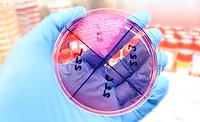Beverages at the Forefront of Innovation in Booming Functional Food Market

In the universe of foods, beverages offer tremendous opportunities for innovation. A key area of focus for industry today is functional beverages—the fastest-growing sector of the functional food market. These range from drinks that claim to improve athletic endurance, energy, hydration and health (with the latter encompassing general wellness/immunity, bone/joint, cognitive, digestive and other areas); enhance beauty and relaxation and promote weight loss. The wide variety of functional claims appeals across demographic groups, from adolescents to baby boomers. In addition to capitalizing on the trend of functional ingredients, beverages meet the growing demand for convenience foods. As such, companies of all sizes are investing heavily in the area of functional beverages.
Of course, the building blocks for these new functional beverages are their ingredients. Sometimes, functional drinks are fortified with traditional vitamins and minerals. In other cases, manufacturers are looking to novel ingredients, such as açaí, pomegranate or the next so-called superberry, or to natural and/or low-calorie sweeteners such as stevia or monk fruit. Other areas of interest include beverages incorporating omega-3 fatty acids, probiotics and dietary fiber. The list is endless.
These new opportunities also bring new challenges, ranging from formulation to marketing. However, the most critical of these must be ensuring the quality and safety of these ingredients and, in turn, the final beverage product.
Ensuring Quality: A Tall Order
As manufacturers look for new ways to differentiate their products and appeal to consumers, the demand for novel ingredients and those of proven popularity is unremitting. This draws new ingredient suppliers from all over the world into the market, which food companies rely upon to formulate their new beverage products. The choice of global suppliers is often based on their ability to provide lower-cost ingredients. However, there are other reasons as well. Certain natural ingredients, for instance, may be indigenous only to certain parts of the world and thus are acquired from suppliers in those regions. Açaí berries, which thrive in the tropical climates of Central and South America, are one example. However, as manufacturers source raw materials from around the globe, they are challenged to ensure the authenticity—that is, the identity, quality and purity—of what they are purchasing. In considering ingredient suppliers, manufacturers may be presented with less expensive items that claim the same authenticity as a higher-priced one, but how can one ensure it is actually an equivalent ingredient? Standards to establish the identity, quality and purity of food ingredients are necessary to help ensure that the purchaser is acquiring the expected product. While periodic supplier quality checks seem a basic requirement, particularly in the multibillion-dollar food industry that employs so many quality and safety systems, this practice evidently is not employed as often as would be expected.
The Food Chemicals Codex (FCC), published by the U.S. Pharmacopeial Convention (USP), is a compendium of internationally applicable standards designating the identity, quality and purity of more than 1,100 food ingredients. Any food ingredient legally marketed anywhere in the world is eligible to be added to the compendium. These standards are useful in a variety of ways, including conducting day-to-day business transactions as part of mutual agreements and contracts between food manufacturers and ingredient suppliers, and for maintaining regulatory compliance in those jurisdictions that have adopted FCC in whole or in part. These independent standards can assist manufacturers and suppliers in defining shared expectations regarding ingredient quality. In a globalized industry in which the size and sophistication of suppliers run the gamut, independent public standards can serve as a valuable resource and can level the playing field among suppliers.
Adding to the complexity of supply chain management as ingredients are sourced worldwide, industry is also challenged by the sheer number of food ingredients in use today. Take sweeteners used in diet soft drinks. In the not-too-distant past, soda was offered in sweetened varieties of “regular” (i.e., sucrose or corn syrup) and “diet” (typically aspartame). Today, diet soda is offered not as one but many different products, differentiated in large part by how they are sweetened: with the traditional aspartame, with sucralose, with stevia—and newer sweeteners are emerging. Of course, this example does not even take into account the multitude of other variations in diet soda—cherry, vanilla and other flavors such as added lemon or lime, caffeinated or caffeine-free, cans and bottles of different sizes, etc. It is clear why most grocery stores can fill a full aisle with soft drinks alone. The result is more choice for consumers based on their preferences, but also greater complexity for food manufacturers. Every individual ingredient requires a unique set of tests to guarantee quality and safety, and companies must account for more and more ingredients.
Beyond the number of ingredients used in food production, the complexity of many newer ingredients is also heightened for many reasons. This is often the case with “natural” ingredients that are currently in demand. One example is rebaudioside A (Reb A), popularly known as stevia, and used widely in beverages. Reb A, whose uniqueness and appeal lie in the fact that it is a “natural” (i.e., plant-based) zero-calorie sweetener, provides a specific set of scientific challenges. Reb A is just one of many individual steviol glycosides produced in the stevia plant. These have varying degrees of purity. As a family of compounds with similar chemical features, the various steviol glycosides all naturally occur side by side in the same plant and have similar, but not identical, features (e.g., they are all sweet but to different degrees and with different flavor profiles). Variations can have significant impact on the final product. Individual manufacturers follow different strategies by either extracting or purifying only the most prevalent compound, Reb A, or the whole family of steviol glycosides. Different processes result in different purities. Moreover, steviol glycosides are difficult to analyze, as these are plant-derived, large and complex molecules that are not easily separated from each other or from other plant-derived, large and complex molecules.
Through FCC, USP has developed standards for Reb A, as well as for a mixture of steviol glycosides, which include a newly developed method capable of separating and measuring all nine glycosides. Manufacturers should be particularly vigilant when dealing with natural ingredients that are of high interest to consumers, such as Reb A. There are numerous examples of thriving markets for inauthentic ingredients in environments where there is limited supply (often the case with natural ingredients) and high demand. Constant pressure for product innovation, economic pressures and a globalized industry all contribute to the need for standards to verify the authenticity of ingredients used to formulate finished products.
Functional Ingredients and Health Claims
Though Reb A is being explored for other functional benefits it can be connected to—extending beyond claims of low calorie and natural—for the time being, the ingredient appeals to consumers from a weight-management perspective. However, when looking at other products being associated with functional health claims, even greater complexity arises. Probiotics offer one such example. These products have undergone increased scrutiny based on their health claims, often related to digestive health, with regulators in the U.S. Food and Drug Administration (FDA), the U.S. Federal Trade Commission, the European Food Safety Authority and elsewhere evaluating claims with a critical eye. At the same time, probiotics are being incorporated into new foods and beverages beyond the traditional yogurt/dairy products, by manufacturers who are not as experienced working with them. The need for strong science to undergird these claims is more urgent than ever.
In connecting functional claims to their products, manufacturers rely upon the results of clinical trials of particular ingredients. Herein lies some scientific complexity, with probiotics as a good case study. Given that many different strains of microorganisms are cultured and have been tested and used in foods, any supporting studies for justifying health claims are at the specific strain level. For any claimed health benefit, manufacturers should be able to confirm that what they are using in a probiotic food product is the strain tested. This speaks directly to the identity of the probiotic ingredient—a key component of a public standard. USP is beginning to set such standards for probiotics, but for these ingredients—and for all functional ingredients—key questions and issues still must be resolved.
One factor is the overlap of foods and dietary supplements in the functional ingredients arena, which is highly relevant to beverages in particular. Some products may appear to be beverages but are actually marketed as dietary supplements, and it can be a challenge for consumers to tell the difference when shopping for products. The only difference from a consumer perspective may be whether there is a nutrition facts panel or supplement facts panel on the label. In the United States, this has been the subject of recent warning letters issued by FDA. Additionally, Health Canada announced in April 2012 that it will no longer allow functional foods and beverages to be marketed under Natural Health Products Regulations.
The Road Ahead
Functional ingredients will continue their sharp trajectory as consumers demand products with perceived benefits to health and wellness. Beverages in particular are poised to continue successfully incorporating novel ingredients. The authenticity of these ingredients should not be taken at face value, and manufacturers must take steps to verify supplier claims. How are identity and function intertwined? To what extent? How is this measured? With more and more functional ingredients entering the market, manufacturers, regulators and standards-setting bodies face a pressing need to come to some level of agreement on these types of questions. This is the focus of an upcoming symposium that USP is convening in Boston, September 18–20, 2012: “Functional Foods and Dietary Supplements—Global Opportunities and Challenges.”
Public standards play a critical role here and can also assist legitimate suppliers that may be competing with less-scrupulous ones offering substances of questionable quality. Moreover, with many functional ingredients, industry, regulators and standards-setting bodies are still in uncharted territory. To preserve the reputation of these products, greater clarity on a number of fronts related to identity and functionality must be achieved. Otherwise, functional claims may become unreliable and meaningless.

Markus Lipp, Ph.D., is director of food standards for USP. He has 20 years of experience in food and food ingredient issues, bottled water quality standards and genetically modified agricultural products. For more information on USP’s upcoming symposium on functional ingredients, visit uspgo.to/boston-s3-2012.
Looking for quick answers on food safety topics?
Try Ask FSM, our new smart AI search tool.
Ask FSM →








